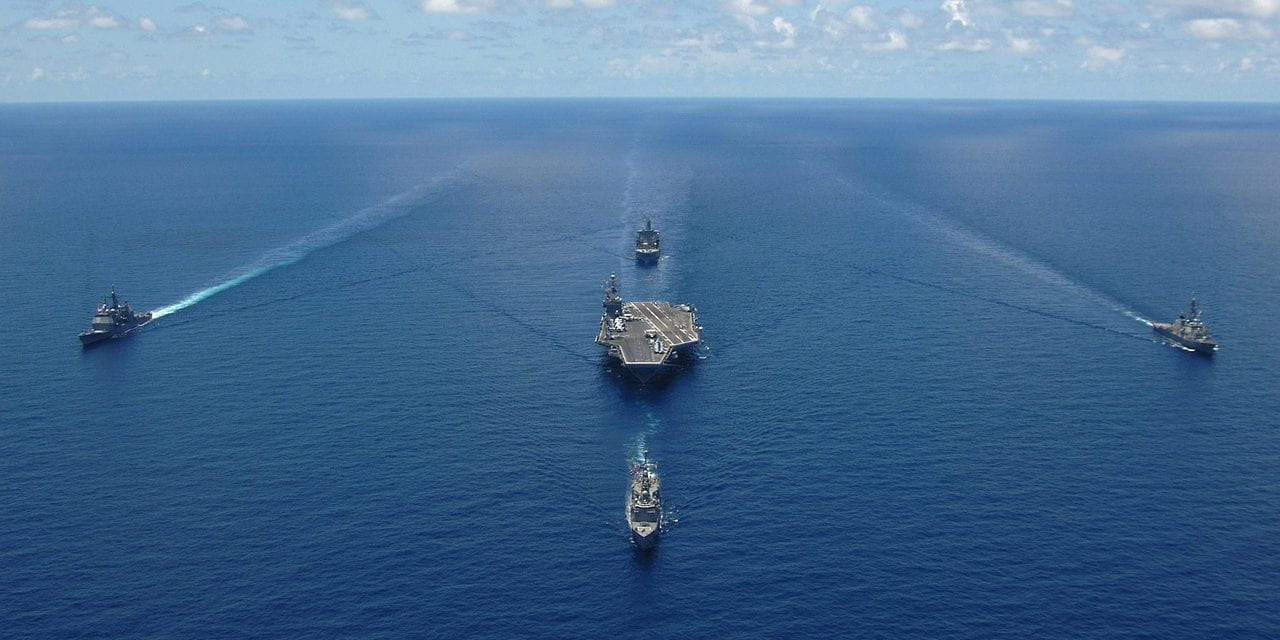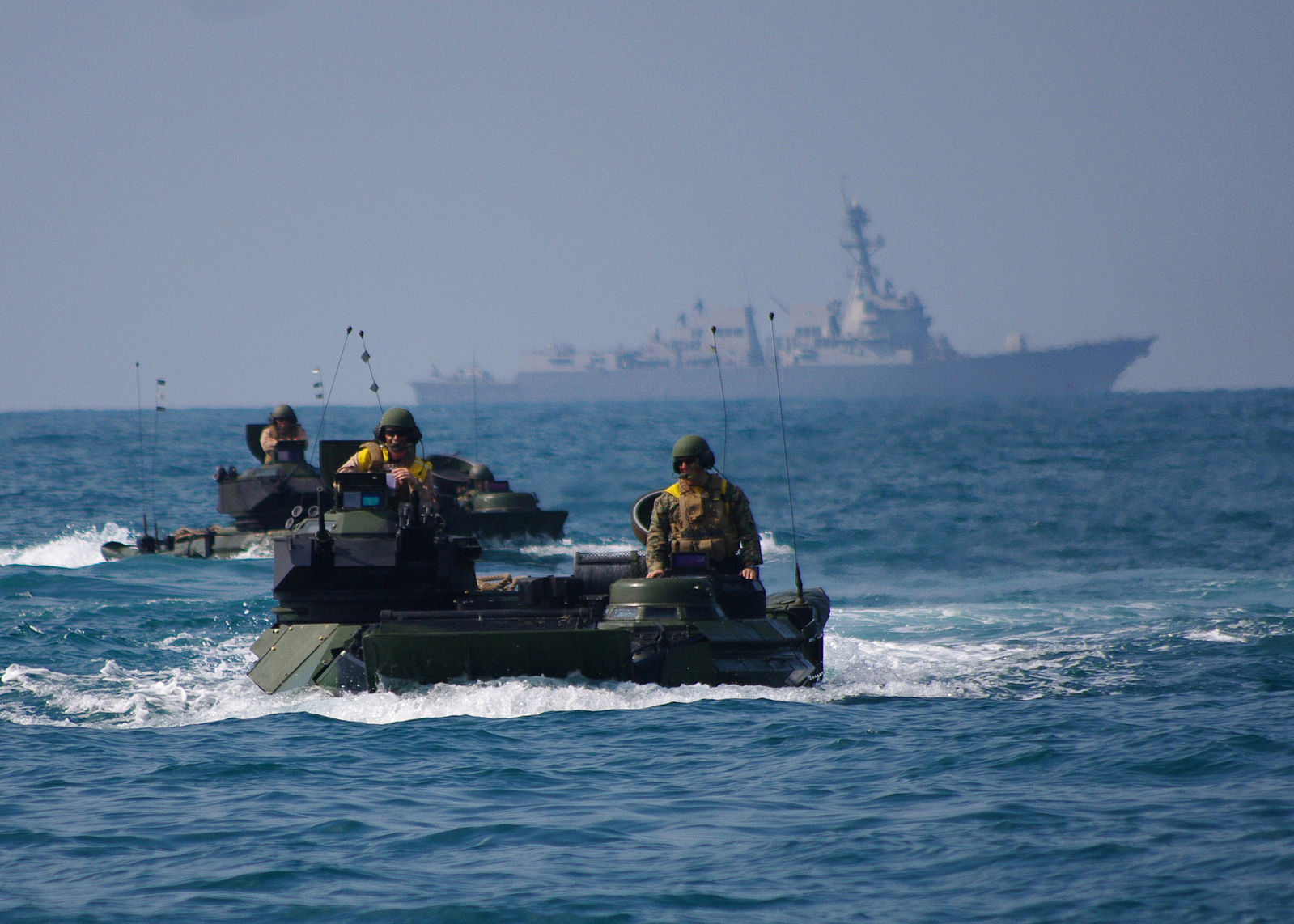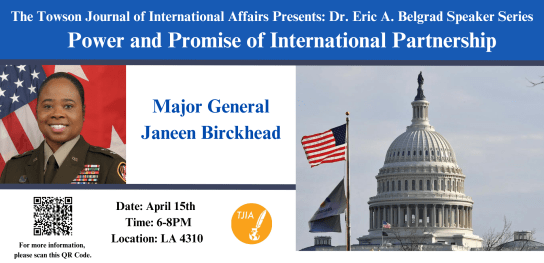The South China Sea has been a point of friction between two increasingly confrontational world powers: the US and China. While the latter claims most of the sea as part of its territory, the US views this claim as Chinese expansionist rhetoric and recognizes the Sea’s vital strategic importance for influence in the South East Asian theatre. The South China Sea lies in the Western Pacific, due south of China and near Taiwan, the Philippines, Malaysia, Indonesia, and Vietnam. The South China Sea is a passageway for almost one third of the world’s shipping, has significant reserves of oil and natural gas, and is a vital area for naval operations within the region in the event of military conflict.[1] As tensions continue to rise, both parties are increasingly preparing for conflict, making addressing the South China Sea situation essential in order to avoid a major world conflict.
China has ignored the 2016 ruling that deems its territorial claims in the South China Sea void by international law. Contrary to this ruling, China has been maneuvering naval and air forces in the region, as well as building military outposts on manmade islands.[2] These actions, accompanying China’s growing threat of counterbalancing heavy US influence in the region,[3] have understandably caused considerable alarm in Washington. To China, American military and diplomatic provocations in the region are seen as attempts to intimidate and constrain China and maintain its role as hegemon in the region. Both of these perspectives have consequently stirred a flurry of military provocations, diplomatic protests, and a race to win over the influence of countries within the region as a means of counterbalancing each other.[4]
Projections show that China’s navy will be the strongest in the world by 2035, with the lethality of their military forces increasing rapidly.[5] President Trump’s Secretary of Defense Mark Esper has stated that the US will need a variety of 500 new ships for its navy to counter China by 2045.[6] One should consider, however, that on numerous occasions predictions have been made of the US’ diminishing gap in power relative to China in recent decades only to be proven exaggerated.[7] However, the fact that China is growing and modernizing its fleet still causes considerable concern. Currently, China’s military has over double the manpower of the United States, 7000 more tanks, and 300 more naval assets.[8] Despite this, the US still remains an unmatched global military hegemon, spending more on its military than all other countries combined.[9] This makes the South China Sea the center point of confrontation between the existing top dog and a rising regional challenger.
The US has been quick to draw support from allies in the region as a means of consolidating influence to counterbalance China’s presence in the South China Sea. The US recently praised the UK for committing one of its two aircraft carriers to the South China Sea as a response to China’s ambitions in the region.[10] Meanwhile, Japan’s Maritime Self-Defense Force has deployed three vessels to the region, around the same time that the USS John McCain destroyer approached the disputed Paracel Islands and subsequently roused Chinese diplomatic protest.
Other US ships, such as the USS Nimitz and USS Reagan aircraft carriers, have regularly sailed through the South China Sea as a demonstration that the waters remain international.[11] China has also protested American spy tactics in the South China Sea. This came after a Guam-based American spy aircraft transmitted signals disguised as a Malaysian civilian plane, which was done to get closer to Chinese military establishments without suspicion. China says this is a violation of international law.[12] Meanwhile, as a military-based response and a show of force, China has been conducting live-fire exercises and launching ballistic missile tests in the region, all the while basing forces in its manmade military base islands.
Diplomatically, both states have been accusing the other of aggressive and confrontational behavior within the region, a theme that dominated the September ASEAN conference between the leading states of South East.[13] Chinese state-owned media has stated that the US propagates an image of Chinese aggression to justify its attempts to maintain hegemony through aggression in the region. It also voiced vehement opposition to US Secretary of State Pompeo’s anti-Chinese rhetoric as dogma aimed to cause political strife and worsen relations between China and its allies.[14] This came before Pompeo’s provocative tour through numerous East Asian nations through late September and early October that he used as a way of reinforcing US support in the region.[15] These diplomatic confrontations are largely aimed at swaying the influence of regional stakeholders in the South China Sea conflict, yet to further this goal, both China and the US have turned to aid and economic cooperation as well.[16]
Last month, and much to China’s protest, the US introduced a new $150 million aid program for four countries along the Mekong River: Vietnam, Myanmar, Cambodia, and Thailand, for the purpose of countering the environmental effects of China’s numerous dams.[17] Though this move is not directly related to the South China Sea, Washington’s decision is an example of its efforts at maintaining influence and counterbalancing growing Chinese authority in the South East Asian theatre that stems from the South China Sea conflict. This demonstrates the ability and tendency of the geopolitical conflict to affect policy elsewhere outside the immediate South China Sea area.
Vietnam voiced support with the US’ role in the region at Semptember’s ASEAN conference.[18] Indonesia meanwhile, recently had a confrontation between a patrol ship and a Chinese Coast Guard vessel. The dispute arose over whether or not the vessel was in Indonesia waters. The Chinese vessel ended up leaving first. The US was quick to use this as an example of Chinese aggression in the region.[19] Malaysia, despite having territorial disputes with China in the South China Sea, remains very quiet on the matter and refuses to openly take a pro-US stance on the conflict. This is because China has successfully leveraged its economic influence in the country as Malaysia’s largest trading partner and a resource for COVID-19 medical equipment, prompting Malaysia to prioritize preserving this relationship.[20]
The situation of the Philippines is much more ambiguous. Historically, the Philippines has been very pro-US, however, their current leader Duterte has been voicing increasingly pro-China sentiments, indicating a platform to reduce Filipino dependency on the US. Though the Philippines have assured the US that its presence in the South China Sea will not be compromised by the Philippines’ new standings with China, both China and the US have been trying to sway the country in their favor. This is because of the Philippines’ ability to enhance power projection into the South China Sea, the present US military bases stationed in the Philippines, and the central role it has in the conflict as a main stakeholder.
The US held almost 300 military exercises in the country last year, and funded an animal disease laboratory, donated five thousand hygiene kits, and 100 ventilators to combat COVID-19. China’s defense minister, however, recently visited the nation and donated $20 million in defense equipment, with Duterte meanwhile blasting US pharmaceutical prices and stating his intention to prioritize buying Chinese and Russian vaccines. Exeperts generally contend that the Philippines’ pivot to China will likely lose much of its momentum when Duterte steps down as president.[21]
The state of the South China Sea resembles a conflict of epic proportions in the making, which thus prompts us to not make the mistake of assuming that the tensions will cool in due time. China and the US have employed an arsenal of diplomatic, economic, and military means of containing the other’s influence in the region, spelling further escalation as each competes for better strategic standing within the South China Sea. The US’ hard power capabilities, being the biggest military power in the globe, and China’s rapid growth in capacity coupled with its increasingly provocative actions create an ominous picture of the future if such conflict escalation is not mitigated. Over the past 500 years, twelve of the sixteen instances of a rising power confronting an existing hegemon has resulted in war, and there is little convincing evidence to show that peace is on its way between the two states to prevent them becoming part of this statistic.[22] As the US grapples with a growing China’s increasingly aggressive behavior in the region, it must be prepared to confront similar situations, decisions and questions it had seen against the Soviet Union in the Cold War. The light at the end of the tunnel will only be reached by the US through carefully playing its diplomatic, military, and economic cards to peacefully subdue China. The most important, yet unanswerable question at the moment, remains whether these states will be able to settle the South China Sea situation without conflict. The next few years during this formable period of the confrontation will be critical in the conflict’s development and scale.
Bibliography
[1] Uptin Saiidi, “Here’s Why the South China Sea Is Highly Contested,” CNBC (CNBC, February 7, 2018), https://www.cnbc.com/2018/02/07/heres-why-the-south-china-sea-is-highly-contested.html.
[2] Ibid
[3] Ambassador Chas W. Freeman, “China’s Challenge to American Hegemony,” China’s Challenge to American Hegemony | Middle East Policy Council, accessed October 12, 2020, https://mepc.org/speeches/chinas-challenge-american-hegemony.
[4] Dylan Donnelly, “South China Sea Dispute SPREADS to Mekong River amid Fears US Will Dominate Territory,” Express.co.uk (Express.co.uk, September 18, 2020), https://www.express.co.uk/news/world/1336051/south-china-sea-us-world-war-3-Mekong-river-xi-jinping-Donald-trump-news.
[5] Bill McLoughlin, “World War 3 Warning: China Risks ‘All out War’ with US over Taiwan – ‘Very Worried’,” July 21, 2020, https://www.express.co.uk/news/world/1312456/World-war-3-news-China-latest-US-south-china-sea-war.
[6] Ryan Pickrell, “Trump’s Secretary of Defense Says the US Navy Needs 500 Ships by 2045 to Counter China,” MSN (Business Insider, October 7, 2020), https://www.msn.com/en-us/news/world/trumps-secretary-of-defense-says-the-us-navy-needs-500-ships-by-2045-to-counter-china/ar-BB19N6gN.
[7] Henry R. Nau, “Chapter 2: China: The Conflicted Rising Power,” in Worldviews of Aspiring Powers: Domestic Foreign Policy Debates in China, India, Iran, Japan, and Russia(New York: Oxford University Press, 2013).
[8] Manon Dark, “South China Sea: Beijing and US Face off at Asian Summit as Pompeo Lashes out at ‘Bullies’,” Express.co.uk (Express.co.uk, September 10, 2020), https://www.express.co.uk/news/world/1333644/south-china-sea-news-us-world-war-3-summit-latest-military-mike-pompeo-latest.
[9] Ambassador Chas W. Freeman, “China’s Challenge to American Hegemony,” China’s Challenge to American Hegemony | Middle East Policy Council, accessed October 12, 2020
[10] Brian McGleenon, “South China Sea: US Praises UK as Allies Prepare to Take Action against Beijing,” Express.co.uk (Express.co.uk, September 22, 2020), https://www.express.co.uk/news/world/1338733/south-china-sea-us-uk-royal-navy-hms-queen-elizabeth-world-war-3.
[11] Bill McLoughlin, “World War 3 Warning: China Risks ‘All out War’ with US over Taiwan – ‘Very Worried’,” July 21, 2020.
[12] Liu Zhen, “China Says US Spy Planes Posing as Airliners Are a ‘Serious Threat’ in the South China Sea,” Business Insider (Business Insider, September 22, 2020), https://www.businessinsider.com/china-says-us-spy-planes-posing-as-airliners-serious-threat-2020-9.
[13] Manon Dark, “South China Sea: Beijing and US Face off at Asian Summit as Pompeo Lashes out at ‘Bullies’,” Express.co.uk (Express.co.uk, September 10, 2020)
[14] “Does China Seek Global Hegemony?,” Chinadaily.com.cn (China Daily, August 25, 2020), http://www.chinadaily.com.cn/a/202008/25/WS5f44b554a310675eafc55658.html.
[15] Sarah Zheng and Kristin Huang, “Pompeo Keeps up Pressure on China despite Cutting Short Asia Tour,” South China Morning Post (South China Morning Post, October 4, 2020), https://www.scmp.com/news/china/diplomacy/article/3104104/mike-pompeo-keeps-pressure-china-despite-cutting-short-asia.
[16] Laura Zhou, “US-China Rivalry in South China Sea Has Philippines at Its Core, Observers Say,” South China Morning Post (South China Morning Post, September 20, 2020), https://www.scmp.com/news/china/diplomacy/article/3102259/us-china-rivalry-south-china-sea-has-philippines-its-core.
[17] Dylan Donnelly, “South China Sea Dispute SPREADS to Mekong River amid Fears US Will Dominate Territory,” Express.co.uk (Express.co.uk, September 18, 2020)
[18] “Vietnam Backs US Role in South China Sea, Rebuffing Beijing at Asean Meeting,” The Straits Times (The Straits Times, September 10, 2020), https://www.straitstimes.com/asia/se-asia/vietnam-backs-us-role-in-south-china-sea-rebuffing-beijing-at-asean-meeting.
[19] Brian McGleenon, “South China Sea: US Praises UK as Allies Prepare to Take Action against Beijing,” Express.co.uk (Express.co.uk, September 22, 2020)
[20] Bhavan Jaipragas, “South China Sea: Malaysia to Stick with ‘Quiet Diplomacy’ towards Beijing in Dispute, Analysts Say,” MSN (South China Morning Post, October 8, 2020), https://www.msn.com/en-xl/news/other/south-china-sea-malaysia-to-stick-with-quiet-diplomacy-towards-beijing-in-dispute-analysts-say/ar-BB19PgQq.
[21] Laura Zhou, “US-China Rivalry in South China Sea Has Philippines at Its Core, Observers Say,” South China Morning Post (South China Morning Post, September 20, 2020)
[22] Graham Tillett Allison, Destined for War Can America and China Escape Thucydides’s Trap? (Melbourne: Scribe, 2020).






